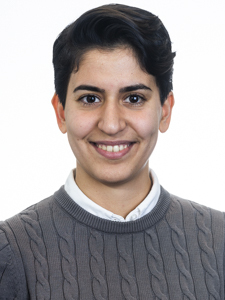Datum
- 2023 feb 01
- Expired!
Tid
- 13:00
Platser
Presenter

Sozan Darabi
Mer info
Defence of doctoral thesis: Sozan Darabi – Electrically Conducting Cellulose Yarns for Electronic Textiles
Chalmers | WWSC
The defense is taking place at 10:an, Kemigården 4, Chalmers and online via Zoom.
Supervisor: Professor Christian Müller, Chalmers
Abstract:
Wearable electronics can be used for the purpose of fitness tracking, health monitoring, energy harvesting, and even for communication. Electronic textiles (e-textiles) are a versatile platform which can be employed for the realization of wearable electronics. E-textiles present an opportunity to incorporate electronics into textiles while also maintaining the feel and wearability of textile materials. To fabricate e-textile devices, electrically conducting yarns can be used as building blocks. It is of importance to use materials that are lightweight, benign, and scalable to enable the widespread use of e-textiles. Electrically conducting yarn can be produced by combining conducting, semiconducting and insulating materials. For energy harvesting applications, textile thermoelectric generators are of interest since these can utilize the temperature gradient between the body and the ambient surroundings to generate electrical energy.
This thesis discusses several strategies for the development of electrically conducting yarns,
which were based on conducting polymers and regenerated cellulose yarns. Hole- and electron-transporting conducting polymer-based yarns were realized for the fabrication of textile thermoelectric generators. Various methods to characterize conducting yarns were explored to evaluate properties of interest for e-textile devices, such as procedures for measuring the electrical resistance and the Seebeck coefficient of the yarns. Furthermore, the electrical stability of the yarns was investigated upon washing and bending, to assess if the produced yarns could withstand textile processing and use. Several p-type polymer-based yarns were produced. P-type polymer-based coated cellulose yarns that were generated through a roll-to-roll process showed a record-high bulk conductivity of 36 S cm-1 for cellulose based conducting yarn. The durability was demonstrated by machine sewing the yarns into a substrate fabric for thermoelectric device fabrication. Furthermore, this thesis introduces the first example of n-type polymer-based yarns, which were produced by spray-coating regenerated cellulose yarns. The p-type and n-type polymer-based coated cellulose yarns enabled the fabrication of an all polymer-based thermoelectric textile device.
The presented methods are scalable and resulted in conducting yarns with resilient electrical properties that could be used for the fabrication of e-textile devices. The demonstrated conducting polymer-based yarns present new opportunities for further development of textile polymer-based thermoelectric generators.

